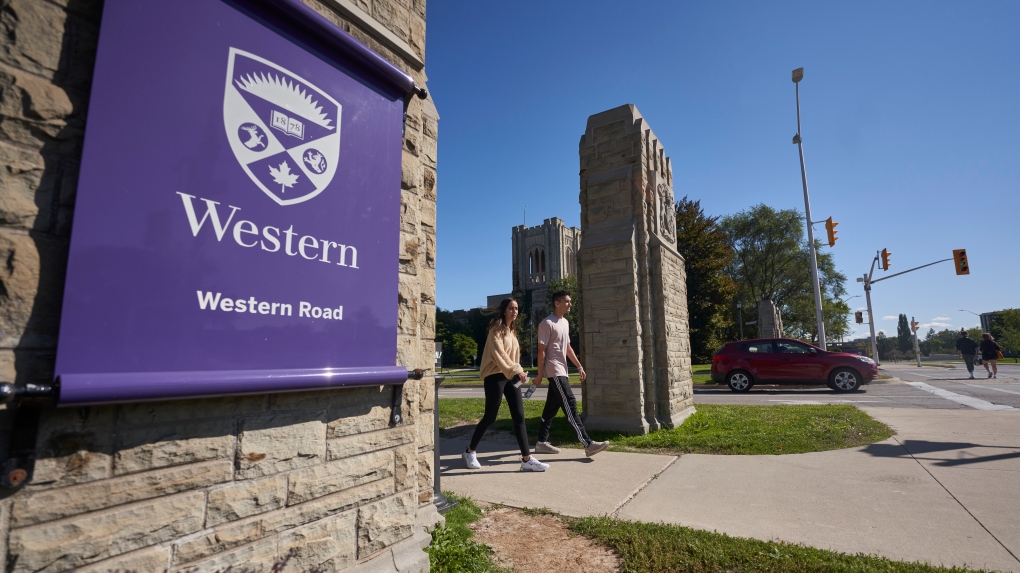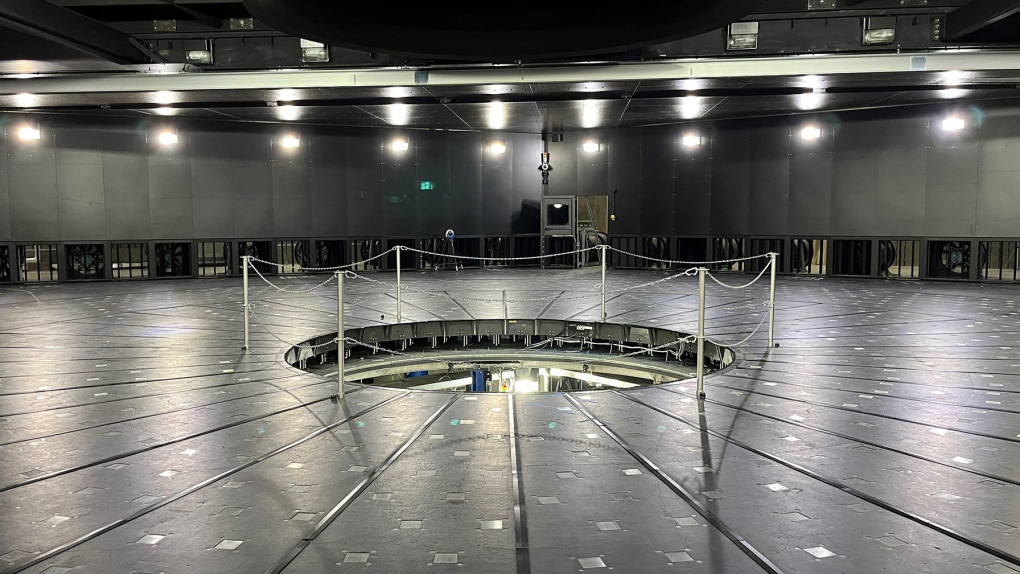Western receives $3.9 million investment for its wind testing facility
 Students walk across campus at Western University in London, Ont., Saturday, Sept. 19, 2020. (THE CANADIAN PRESS/Geoff Robins)
Students walk across campus at Western University in London, Ont., Saturday, Sept. 19, 2020. (THE CANADIAN PRESS/Geoff Robins)
A facility at Western University that’s capable of generating weather systems such as tornadoes and hurricanes received a large investment from the federal government on Friday.
According to a press release issued by Western University, Minister of Innovation, Science, and Industry, François-Philippe Champagne, announced a $628 million investment to support 19 research infrastructure projects at 14 institutions across Canada.
Part of that funding included a nearly $3.9 million investment for London, Ont.’s Western University, and a weather testing facility that’s the first-of-its-kind in Canada.
Known as the Wind Engineering, Energy, and Environment (WindEEE) Research Facilities, the WindEEE dome is capable of generating local and large-scale weather systems, such as tornadoes and hurricanes, in a controlled environment.
“This advanced technology allows researchers to test and understand the effects of weather and climate change on infrastructure,” the release says.
 Western University's WindEEE Dome uses 106 real-time controlled fans and hundreds of flow modifiers to give researchers the ability to modify wind patterns and change their direction during a simulation. (Source: Jeff Renaud/Western Communications)For WindEEE Research Facilities Director Girma Bitsuamlak, this facility is the way of the future.
Western University's WindEEE Dome uses 106 real-time controlled fans and hundreds of flow modifiers to give researchers the ability to modify wind patterns and change their direction during a simulation. (Source: Jeff Renaud/Western Communications)For WindEEE Research Facilities Director Girma Bitsuamlak, this facility is the way of the future.
“WindEEE is at the forefront of innovative research, creating new ways of measuring, testing, and finding engineering solutions for evolving challenges in wind and climate engineering. This support will help us maintain our leadership in climate and wind engineering research,” said Bitsuamlak.
Also housed at the WindEEE Facility is a laboratory that tests the structural safety of buildings and bridges, and a separate facility which tests wind loads on full-scale sized homes.
The funding was made possible through the Canada Foundation for Innovation’s (CFI) Major Science Initiative (MSI) Fund, which supports the operation and maintenance needs of research facilities that possess "national importance.”
“The MSI Fund allows WindEEE researchers, like me, the opportunity to achieve a better understanding of wind engineering and the ability to properly serve and service Canadian and international collaborators through various additional partnerships,” said Bitsuamlak.
In a statement Champagne said, “Canadians are placing us on the world stage by making bold discoveries and challenging our world’s most pressing issues to advance our society, well-being, and environment for all to thrive.”
CTVNews.ca Top Stories

Trudeau and Harris? Poilievre and Trump? Here's who Canadians think would work best with: survey
As Americans prepare to elect their next president on Tuesday, new data from the Angus Reid Institute suggests Canadians hold differing views as to which federal party leaders would be best suited to deal with either Donald Trump or Kamala Harris.
B.C. port employers launch lockout at terminals in labour dispute with workers
Employers at British Columbia ports say they are going ahead with locking out more than 700 foremen across the province after strike activities from union members began.
Months after VRBO booking, Taylor Swift fan told home 'not available' during Vancouver concert
A frustrated Taylor Swift fan is speaking out after being pushed from a short-term rental she booked for the upcoming Vancouver leg of the superstar’s Eras Tour.
Felonies, assassination attempts and a last-minute change on the ticket leads voters to Tuesday's U.S. election
A campaign that has careened through a felony trial, incumbent being pushed off the ticket and assassination attempts comes down to Election Day on Tuesday.
Measles cases in New Brunswick more than double in three days
A measles outbreak declared in New Brunswick’s Zone 3 last week, which includes Fredericton and the upper Saint John River Valley, has more than doubled since last week.
Prison sentences handed down for sexually abusive London, Ont. parents
In handing down the sentences for two London parents, Justice Thomas Heeney told the court, "The facts of this case were the most egregious that I have encountered during my 26 years on the bench."
She was diagnosed with Type 2 diabetes about a year ago. Here's how her condition was reversed
A year ago, Lorraine O'Quinn was coping with stress, chronic illness and Type 2 diabetes. Then she discovered a health program that she says changed her life.
Surprise swing state? Iowa poll has Harris suddenly leading
Based on victories in the past two elections and polls leading up to Tuesday’s election, Donald Trump had seemed almost certain to win Iowa, but a new poll has Kamala Harris with a sudden three-point lead.
Russia suspected of sending incendiary devices on US- and Canada-bound planes, Wall Street Journal reports
Incendiary devices that ignited in Germany and the United Kingdom in July were part of a covert Russian operation that aimed to start fires aboard cargo and passenger flights heading to the U.S. and Canada, the Wall Street Journal (WSJ) reported Monday, citing Western security officials.


































